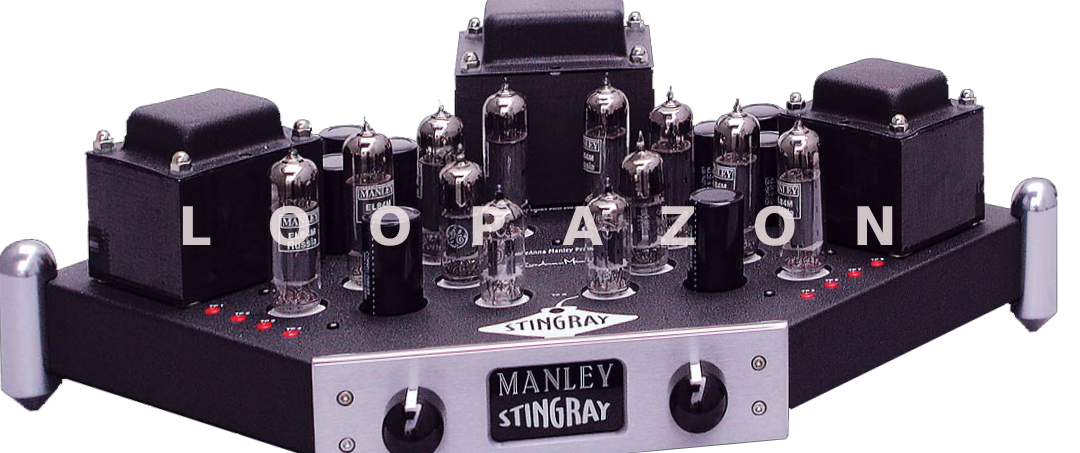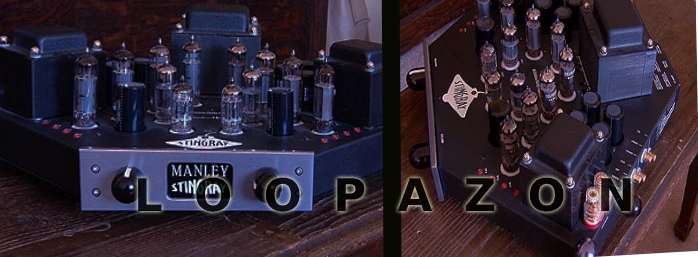An introduction to the Manley Stingray Stereo Integrated Amplifier
Form a band online, promote your music, buy custom beats, sound parts, and share your Beat or Track as a Royalty Free loop with us. Collaborate to make beats online with the best loop makers from around the world on the Forum for musicians and beat makers. Keep up to date with Music News and learn from FL Studio Video Tutorials and the articles on the Blog. Free DAW Music Software downloads, VST and Instrument Packs for FL Studio, Pro Tools, Logic, Ableton, and how to use the most popular free DAW Software, Fruity Loop Plugins, MIDIs and more.
An introduction to the Manley Stingray Stereo Integrated Amplifier
The previous Manley 50 Watt Monoblocks were merged into a stereo chassis with a passive preamp, which resulted in the STINGRAY design. The final objective was to create a vacuum-tube integrated amplifier with absolute influence that upped the ante of high-end performance in a practical, accessible, bare-bones chassis with a dash of elegance. During a break for the cause at HI-FI '98 in Los Angeles, Eve Anna Manley had been sketching her hexagonal work-in-progress for former Stereophile Pooh-Bah J. Gordon Holt on a bar napkin, and that seemed to be a stingray. The history of making the Stingray emerged through this idea.
The benefits of having a passive preamp are widely known: near-perfect clarity, no additional sound, and a signal route that is extremely simple. The Stingray's low level of global feedback, which has the effect of increasing input sensitivity, lends itself nicely to a passive front end.
The
Manley Stingray is essentially a fixed-bias, dual-monoblock
arrangement on a single stainless-steel chassis, with only one power
transformer. It contains a four-position silver-contact input
selector switch, screw-down-style binding posts, and separate left
and right line inputs (gold-plated brass with Teflon dielectric)
positioned to each side of the chassis and adjacent to their
respective output transformers. 
Manley wanted to maintain signal lines and connections as minimal and direct as possible so he could use a passive preamp instead of using a gain-stage device therefore the Stingray's hexagonal shape, which is basically square-shaped with the front and rear corners were chopped off, and thus the hexagonal shape for Stingray emerged. As a result, a pair of bullet-shaped metal pillars hide and embellish the left and right corners, and it also serves as the amplifier's conical feet.
The preamps had two primary functions such as switching and volume. A passive preamp would work great when all the sources are connected as a couple to the output. It is the same as in the Stingray. So it is better to set the passive preamp high to work well. But some people fall into a problem as they keep the passive preamp less.
The amount of gain and dynamic range on the Stingray is the most impressive features. Manley and her design team were able to get four small EL84 output tubes per channel to work in ultra-linear mode.
So before striking the first 12AT7 input tubes, separate left, and suitable silver-contact select switches, which are there for the four stereo line inputs, will feed the music into the quality Noble balance and volume controls. The benefits of a passive preamp, which drives a two-inch cable with extremely low capacitance and near-absolute transparency, are well-known. They have no additional noise that would damage the quality of music, and the signal path is extremely simple. The dependable EL84 output stage may be adjusted between roughly 20 watts of TRIODE or 40 watts of Ultra Linear mode push-pull operation after the powerful 6414 driver/phase splitter. The trimpots and test points, which are conveniently placed on the top surface of the amplifier, may be used to modify individual bias for each tube.
The power supply on the Stingray is extra-rugged and rigid, which is a MANLEY trademark. It is compared to with the sharks, which swim fastly, known for their agility, fluidity, and with who has complete authority. The TAPE LOOP, SUBWOOFER OUT, and RECORD OUT are all inactive. The controls for BALANCE and VOLUME are similarly passive. These circuits don't employ any active electronics or buffers. The RECORD OUT button is directly connected to the input choice switch. So, regardless of whether the Stingray is on or off, whatever source is chosen will be transmitted through the TAPE OUT. When the Stingray is switched off, the SUBWOOFER OUT will also create a signal, but you may turn down the volume control if you don't want any type of tones coming out of it.
Front Panel

-
Balance - This Noble balance control is unique and special. This balancing control has no loss in the middle and may be thought of as a straight wire position. No more than one channel's volume can be reduced.
-
Volume–The volume is exceptionally a noble quality which has a conductive plastic precision attenuator
-
Backlit Panel-Instead of incandescent bulbs, it employs ultra-bright LEDs for badge illumination. This panel indicates the power. If the IEC mains is connected properly and the On/Off Switch is set to "ON," but the panel does not light, you most likely have a blown mains fuse. This is included as a component of the IEC socket assembly. The lighting (LAMP or LED) is dead if the badge does not glow, but the tubes do, and there is music. It is simple to replace. The lamp resembles a fuse. A 12 volt, 0.15 amp, 1/4 X 1 1/4 light can be used to replace it. If the Stingray is upside down, it will pull straight up, but you would have to use a hook or needle-nose pliers to start it again. So while placing the Stingray, you should be careful and check the position.
Back Panel
-
Fuse Cover- To open the fuse cover, you should push in the little slot to slide the locking tab towards it. If you need to replace a fuse, you can use an MDL 3 SLO-BLOW (MDL 1.5 for 220V units). That's a sort of fuse called SLO-BLOW or TIME DELAY.
-
Power Switch -The Power Switch is ON when it is facing towards fuse or is far from the IEC power cable, and it is OFF when it is towards the power cable. The ideal approach to start the system is to switch on the sources such as CD or turn the table first, then switch on the Stingray after 10 seconds. After a minute or so, you may turn up the volume and start playing the music. This sequence protects your speakers by preventing pops and thumps.
-
IEC Mains Socket. The power cable passes through the IEC Mains Socket.
The Rear Panel Controls of Stingray
During the summer of 2005, there were many additional features added to the Stingray production version 3. These features were already available in the add-on. It must be noted that when the word input is explained, it must be taken as the stereo inputs. The stereo inputs are left and right. Everything comes in two sets. One is for the left and another for the right. Any unbalanced RCA audio analog outputs from your source components can be utilized with any of the four sets of stereo INPUT connectors. They are electrically similar, with the exception of how we designated them, which is based on recommended or regular usage.
If the source you used has balanced output, you must consult the manufacturer to know the best way to connect with unbalanced loads. Using XLR to RCA converter plugs, the balanced gear can be dealt with unbalanced loads. Not only can you use these converter plugs but also specially made XLR to RCA cables. But you have to verify with every item to determine if grounding or floating Pin 3 is preferable. Transformer linked output drives unbalanced inputs by connecting XLR Pins 1&3 to the RCA shield and XLR Pin 2 to the RCA center "ho" pin.
Drawback
Because it's a single-ended input topology, we'd have to add chips or transformers to balance it. There is no power source for ICs inside, and there isn't enough place for extra transformers.
Conclusion
The Manley Laboratories Stingray is a well-made integrated amplifier with a vast, expansive soundstage, a sparkling, crystal top end, a clear, rich, and detailed middle range, and a lean, intense, articulate bass response that needs to compensate for its lack of severe low-end weight.
FAQ
No FAQ found

